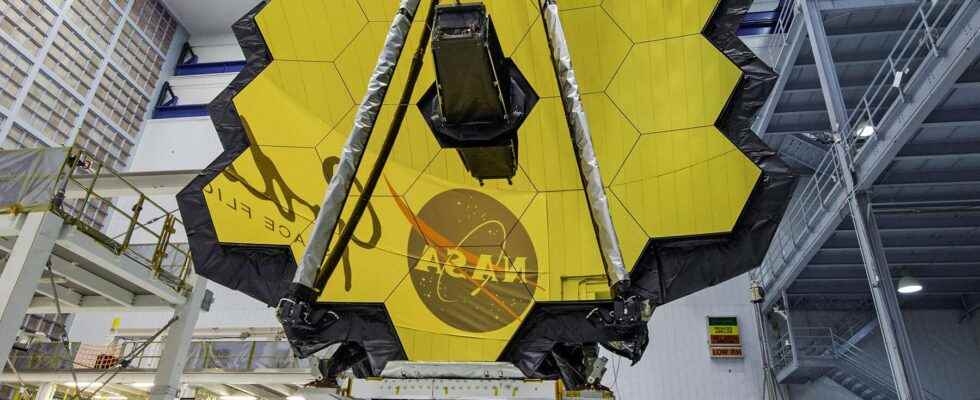The arrival at the Lagrange L2 point of the James-Webb space telescope is the culmination of an epic launched more than 30 years ago. The new high-performance observatory has brought together hundreds of engineers and researchers from around the world over the decades to shape the future of observation of the cosmos.
Everything succeeds James Webb Space Telescope. The device is correctly inserted at Lagrange point L2on January 24, after a month of travel since its launch on December 25, 2021. Positioned 1.5 million kilometers from Earth, the James Webb Space Telescope (JWST) is announced as a true revolution in the field of celestial observation. Thanks to a colossal budget of 10 billion dollars, the JWST is the most powerful space telescope created to date. But if the James-Webb is the promise of a technological leap, it is also a paragon of international collaboration. From American state space agencies to European private companies, the JWST is a veritable patchwork of know-how from all over the world.
The international ambition of the JWST
The James-Webb Space Telescope Project, formerly named Next Generation Space Telescopewas undertaken by the Nasa in the 1990s. It was at the end of the decade, in 1997, that the space agency called on two private, exclusively American companies: Ball Aerospace and Technologies, TWR Inc. In 1999, the preliminary concept of the telescope was studied by TWR and Lockheed Martin. JWST drafts have so far been strictly American. In 2004the European Space Agency (ESA) joined the project, three years before the Canadian Space Agency (CSA), which graft to the construction of the JWST in 2007. Each of the two agencies collaborated financially. Thus, out of 10 billion dollars, Europe financed nearly 300 million euros. CSA contributed $40 million. But the two agencies have also provided various instruments, integrated into the telescope and useful for the James-Webb observation mission.
The construction of the NirSpec instrument (for Near-Infrared Spectrographor spectrograph ofinfrared near), which will be used to image spectroscopic observations of celestial objects whose radiation is in the near infrared, has been coordinated by the european agency. ESA proved to be a key player in the conceptualization and production of Miri (Mid-Infrared Instrument, or mid-infrared instrument). The latter is the result of a collaboration with the Jet Propulsion Laboratory (JPL), an optical instrument described as “general purpose” receiving data fromstars emitting in the mid-infrared. The Canadian Space Agency was in charge of the design of two capital tools for the JWST: the Fine Guidance Sensor (FGS), which allows the telescope optics to “aim” at targets (stars, galaxies, nebulaeplanets…) while focusing, and the Near-InfraRed Imager and Slitless Spectrograph (Niriss). The Niriss is a wide-field spectrograph in the near infrared, installed on the FGS.
A matter of private companies
The ESA indicates this on its site in all transparency : the creation of NirSpec and Miri was carried out by private companies. The institution has thus delegated the manufacture of NirSpec to Airbus Defense and Space. The aerospace firm led a consortium of companies and contractors to deliver the instrument to ESA. Like the European agency, NASA called on private companies to create important tools for the James-Webb telescope. Corning, a large American company specializing in the development of glasses and ceramics, manufactured several optics equipped on the space observatory. Other big names in the American industry joined their efforts to work towards the culmination of the JWST. Northrop Grummanlike Airbus in Europe, has overseen the tasks of other firms such as Ball Aerospace or Harris Corporation, each being dedicated to specific tasks (creation of optics, communication relays, etc.).
However, we will have to wait a few more months to admire the result of 30 years of work by this international scientific effort. For now, everything is going perfectly for the James-Webb telescope, positioned at the Lagrange point L2. The first sightings of the state-of-the-art space observatory are scheduled to take place in the second quarter of 2022.
Interested in what you just read?
